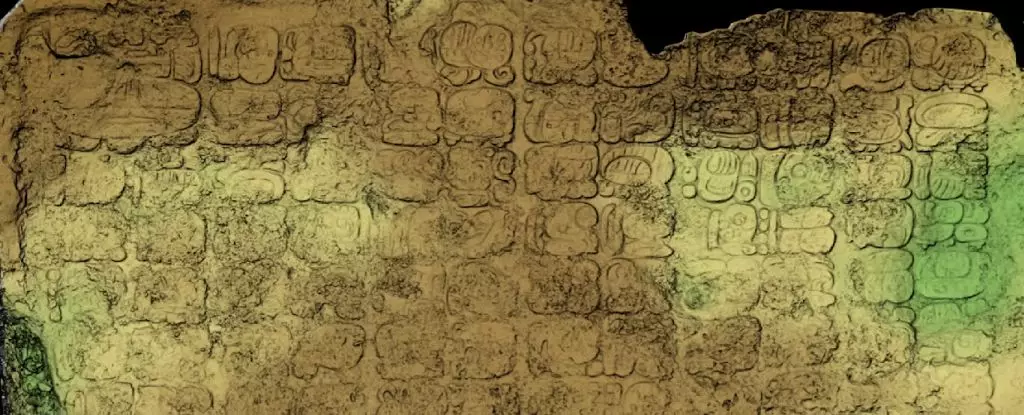Deep in the Mexican jungle at the tip of the Yucatán Peninsula, archaeologists have uncovered a hidden treasure trove of history. The ancient Maya city of Cobá, near the towering Nohoch Mul pyramid, has revealed its secrets through a vast stone slab found tucked away in what was once the floor of a sacred pool. This discovery sheds light on the founding date of a town called Keh Witz Nal, or “Deer Mountain”, as well as naming a previously unknown Maya ruler – K’awiil Ch’ak Chéen, invoking the Maya god of lightning.
The glyphs on the stone slab describe the founding date of Keh Witz Nal as 12 May 569 CE. Additionally, they reference the gods believed to have founded Cobá, such as Bolón Tz’akab Ajaw – the lord of countless generations. Cobá, located in what is now the state of Quintana Roo, was once a thriving cultural hub with an estimated 50,000 inhabitants. The site still carries its Maya name, Ko’ba a, and is filled with engravings and sculptures that offer insights into the spiritual and aesthetic lives of the ancient Maya.
Excavations at Cobá are meticulous and time-consuming, with Mexico’s National Institute of Anthropology and History (INAH) working diligently to uncover and restore the city’s monuments. The stone slab, measuring 11 square meters, features glyphs arranged in a unique L-shaped pattern. With the new information provided by the inscription, researchers have been able to confirm that many rulers of Cobá adopted the name of the god K’awiil. Further study of the inscription is planned, but the primary focus is on preserving the stone from further damage.
To prevent further erosion and water damage, a detailed, high-resolution 3D reconstruction of the stone slab has been created. This reconstruction will enable researchers to study the inscription without causing harm to the original artifact. As the story of Cobá continues to unfold, archaeologists are dedicated to protecting and sharing the rich history of this ancient Maya city with the world.


Leave a Reply